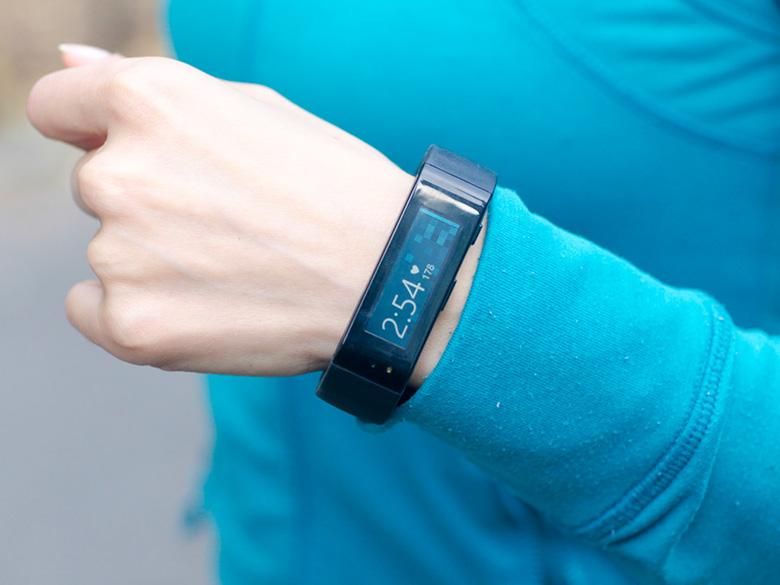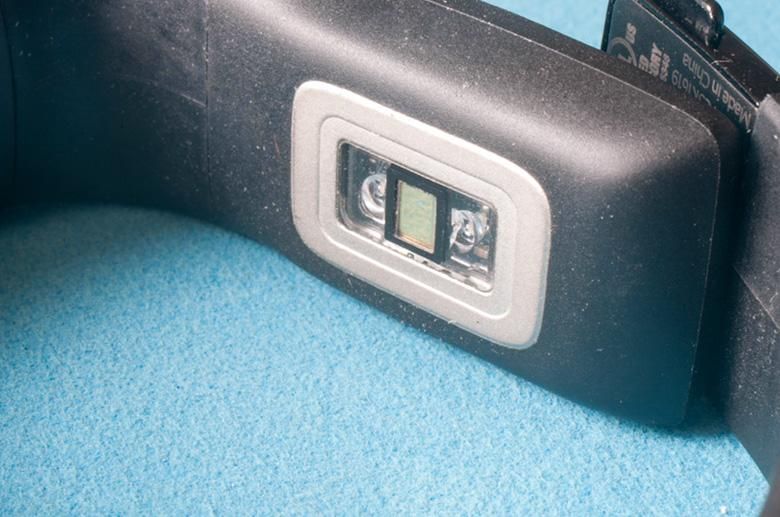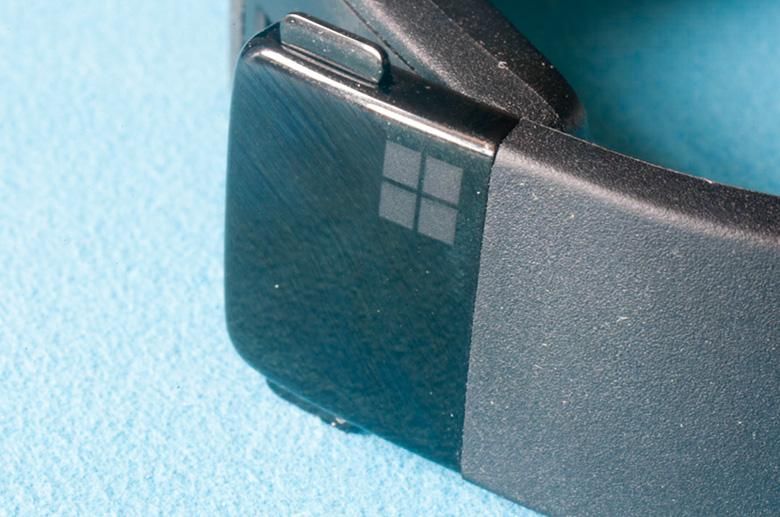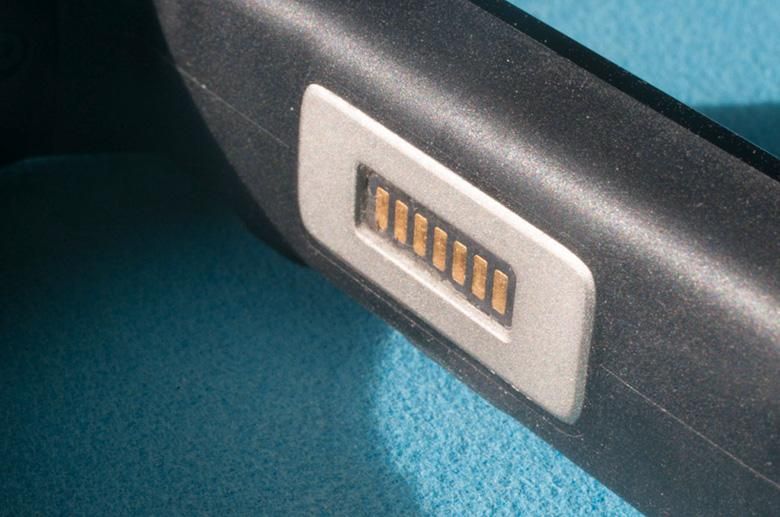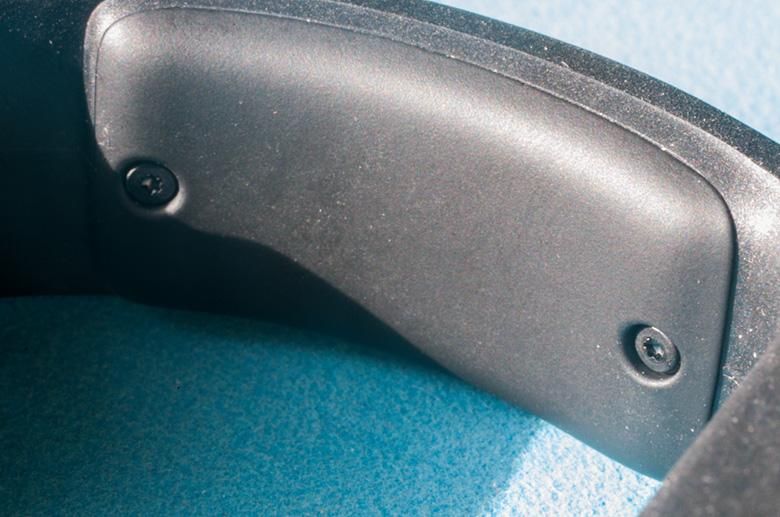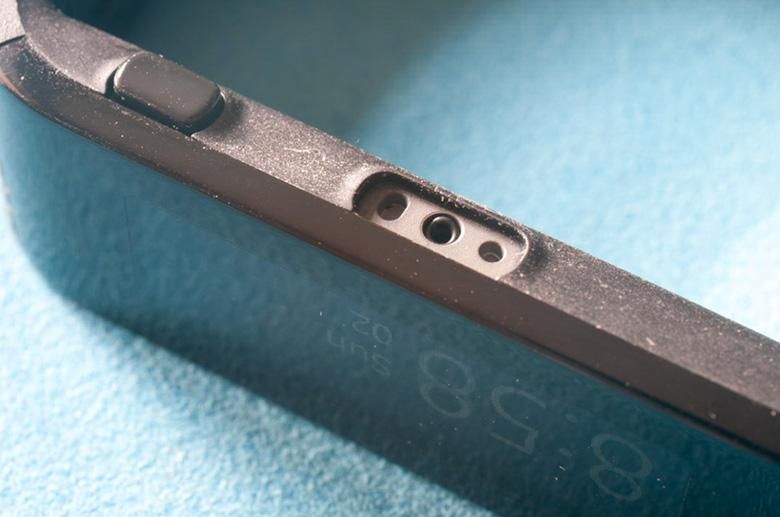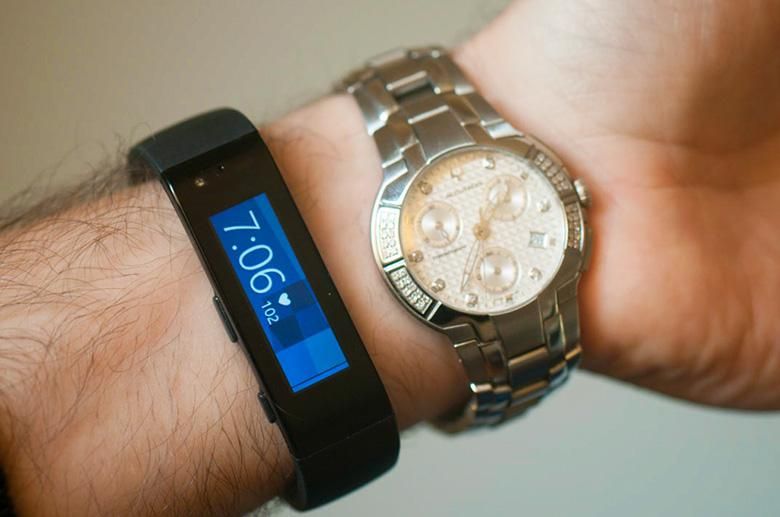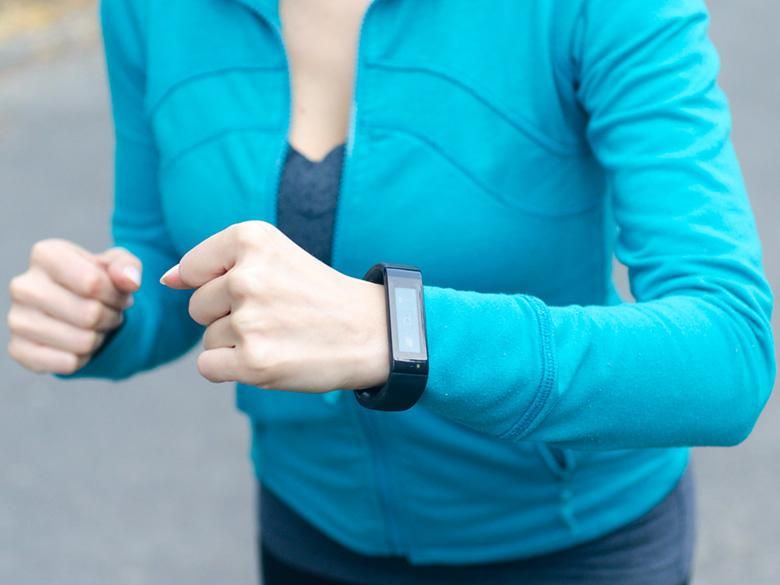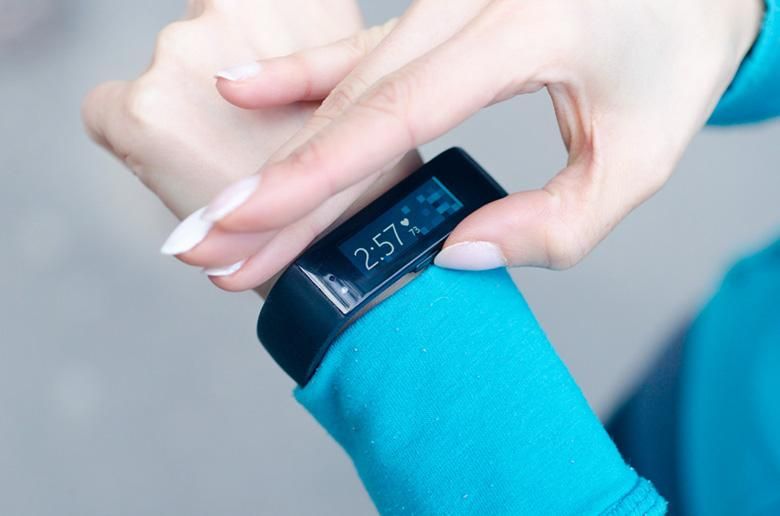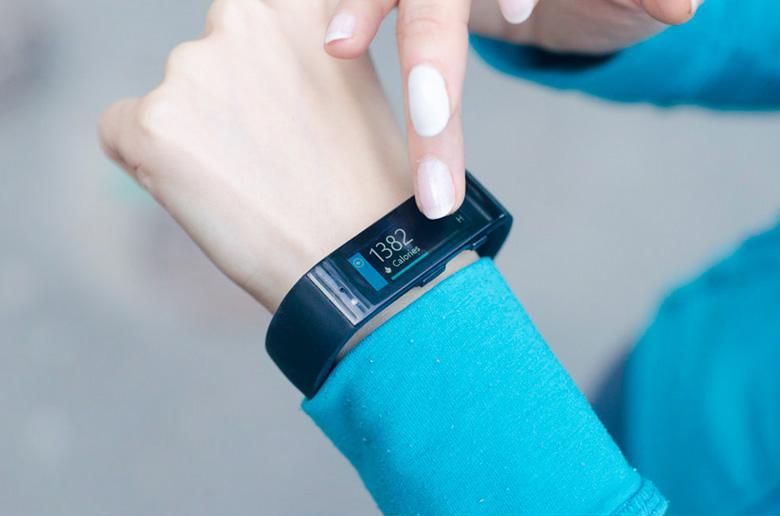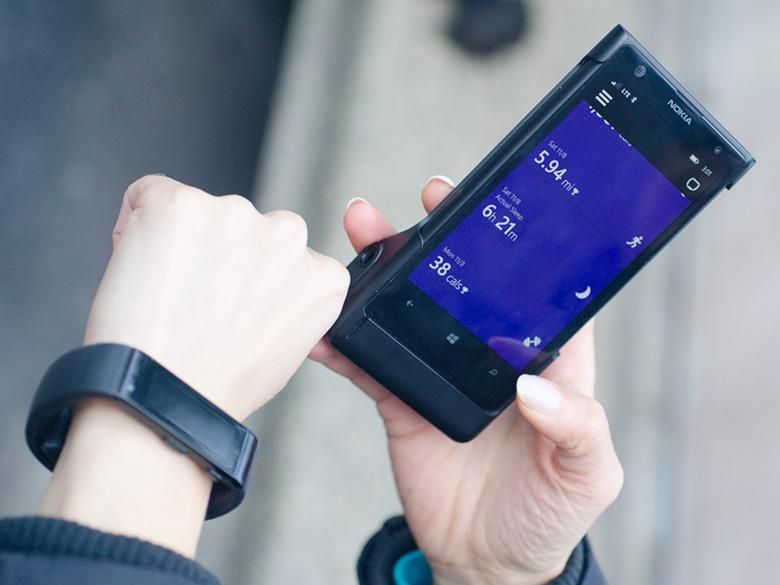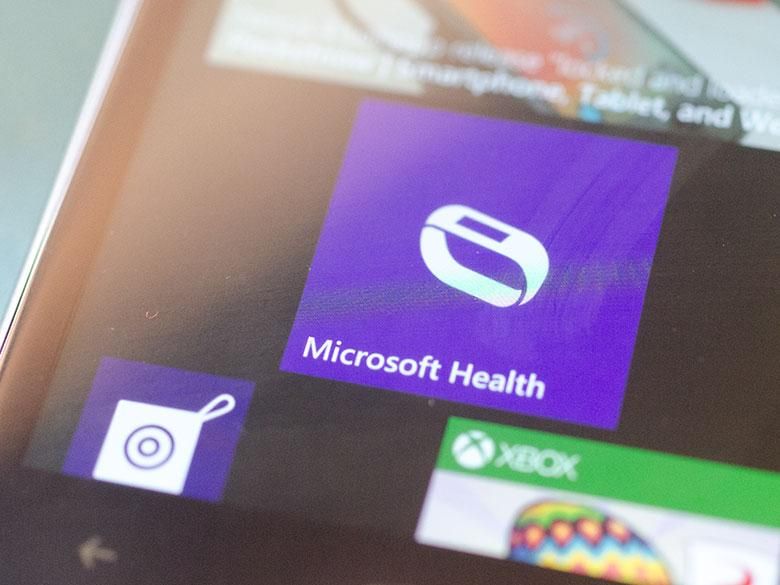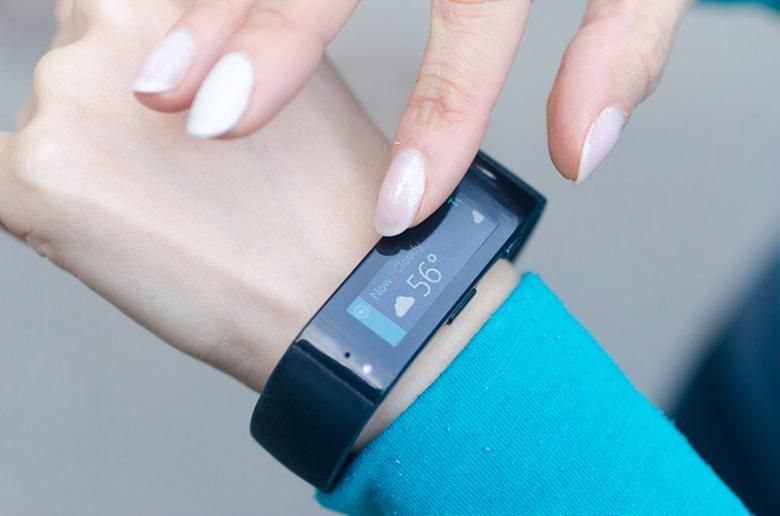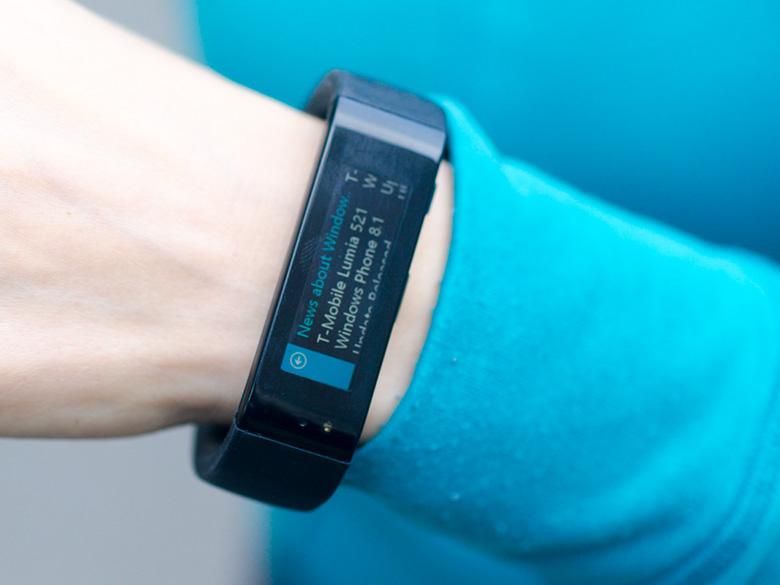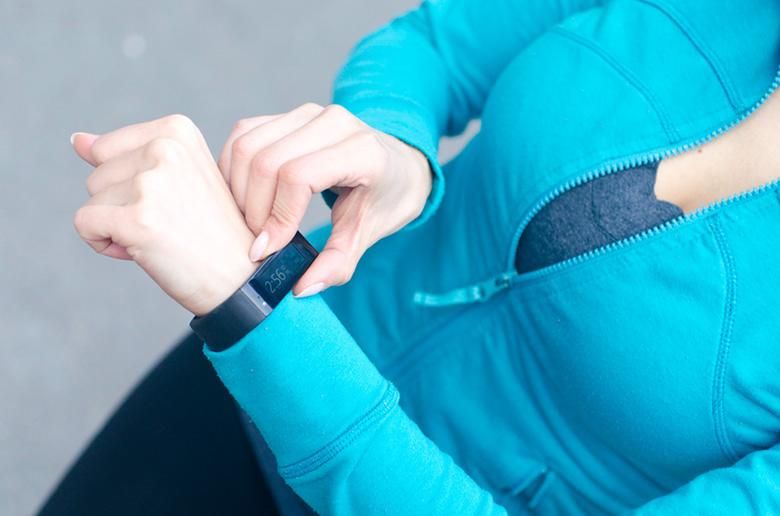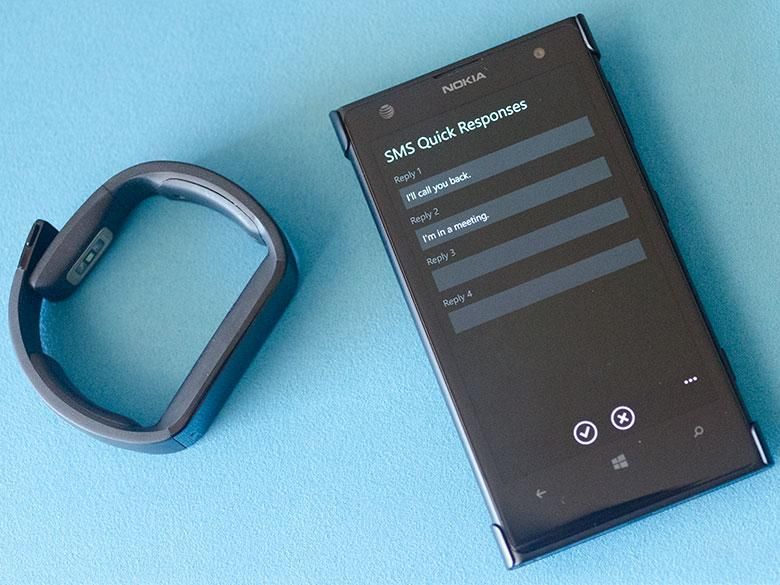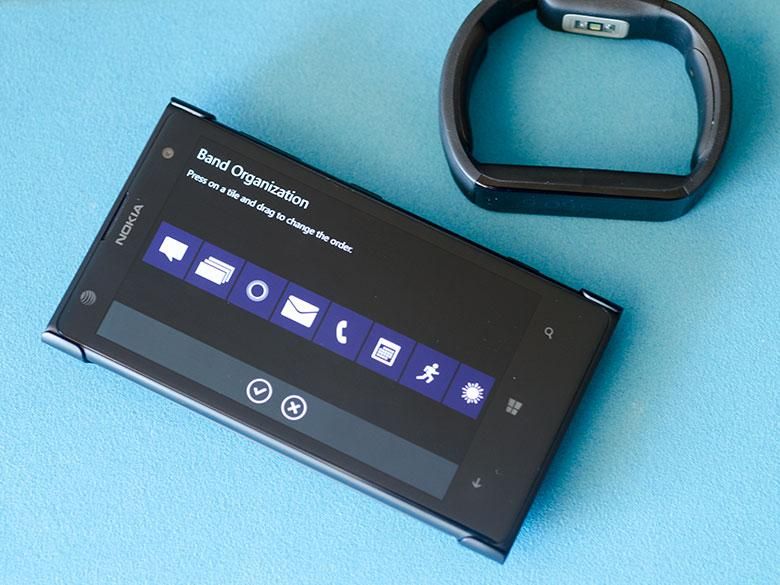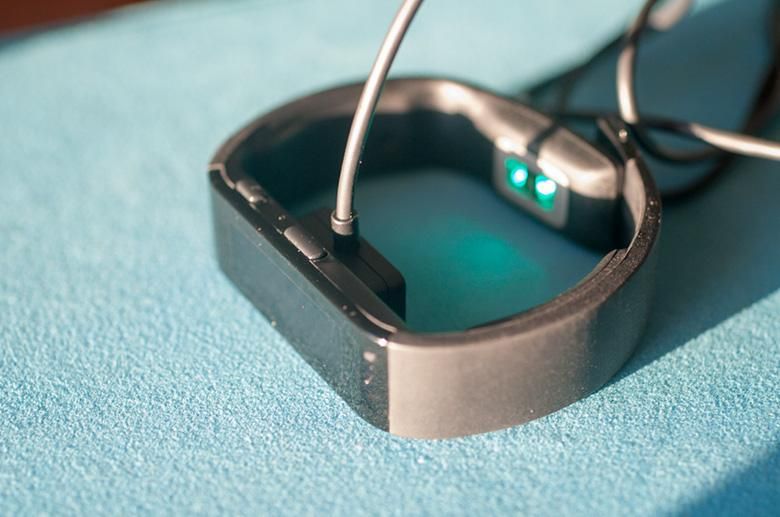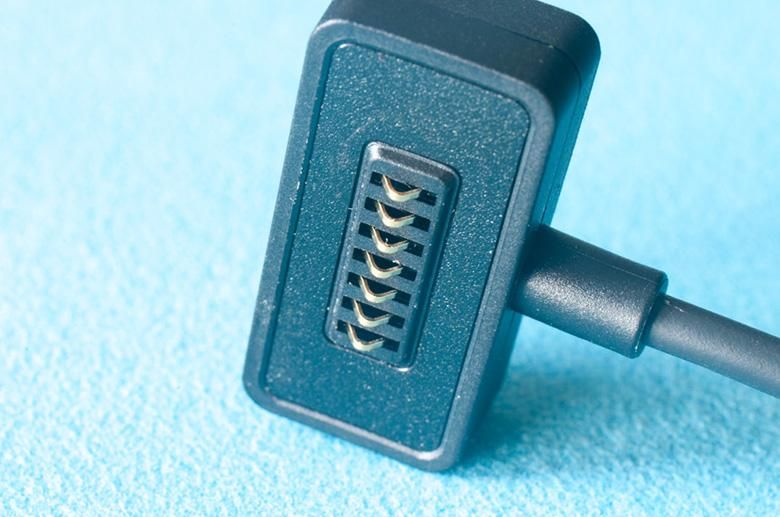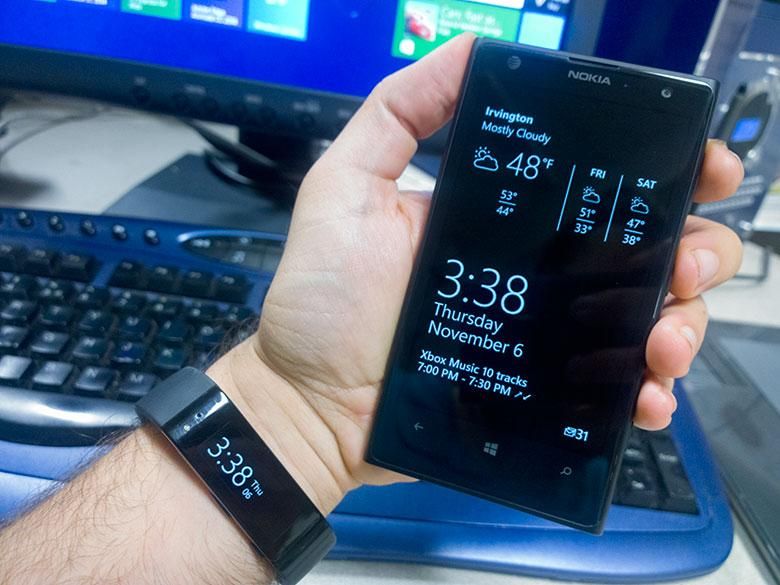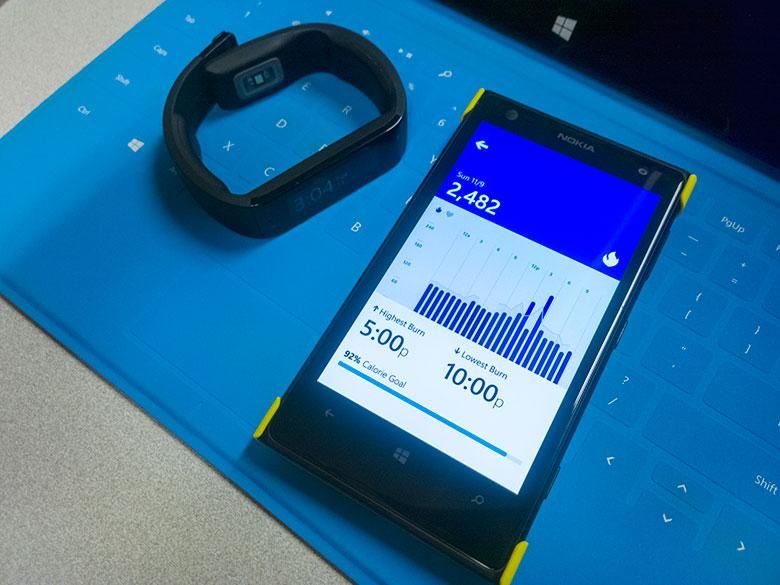The “Microsoft Band” came as a bit of a surprise when it was unveiled late last month. There weren’t any leaked pictures of the device and all we knew about it came from the Windows Store, where the Microsoft Health software appeared the night before the new wrist band went on sale in Microsoft Stores nationwide. The Band is mainly geared towards fitness tracking, though it does have quite a few “smartwatch” type features. We think Microsoft would prefer that people compare it to other fitness trackers as opposed to smart watches, but it certainly does fit somewhat into both categories. So in this review, we’ll take a look at both the fitness aspects of the Microsoft Band as well as it’s productive smartwatch aspects.
It’s important to note that the Microsoft Band is a kind of retail experiment. It’s supposed to be more of a hardware showcase for Microsoft’s Health platform, which is open for other wearable manufacturers to integrate with. The Microsoft Health software isn’t really feature-complete either, and there are plenty of big plans for the future of Microsoft’s new health & fitness platform. You may remember that this is not Microsoft’s first device in the smartwatch category.
Back in 2004 through 2008, Microsoft had a number of original equipment manufacturers producing smart watches based on their SPOT software and communications system. These smartwatches got their data and notifications through FM Radio transmissions instead of requiring a cell phone data connection and Bluetooth as most do today. The SPOT watches were a commercial failure and there’s no indication that the new smartwatches everyone else is making will see much success 10 years later. Been there, done that! That’s why Microsoft didn’t make a smartwatch this time.
Video Unboxing · Hardware · Comfort
Health & Fitness · Productivity · Battery · Pros/Cons
Pricing/Availability · Conclusion
Unboxing Video
Hardware
The Microsoft Band is only about 3/4″ wide and there’s a thick rubber band that goes around your wrist. It’s stiffer than you might expect because there’s lots of electronics in that wrist band, including a couple of batteries. The screen is pretty small at 1.4 inches and 320 x 106 pixel resolution as you would expect from a fitness tracker or smart watch.
You’ll want to add a screen protector to the Microsoft Band because it’s very scratchable. (Luckily, it comes with one when you buy it.)
A few sensors are on the inside of the band’s latch. Here you’ll see the optical heart rate sensor. It’s also got GPS, a UV sensor, a heart rate monitor, a galvanic skin response sensor, gyrometer, 3-axis accelerometer, ambient light sensor, skin temperature sensor, and a capacitive sensor
The clasp has two buttons on the edges that move two hooks on the inside. The hooks slip into a little track in the other side of the band where they’ll attach when you let go of the buttons. You can slide the clasp up and down the inside of the track to change how the Band fits around your wrist.
On the inside of the Band behind the screen is a sync and charging port. The outer area is magnetic so that the cable can stay attached, and there are contacts in the middle. Unfortunately, this area can get awfully dirty since it’s pressed up against your sweaty skin all the time.
The sides of the band are not just flexible rubber material. They also include electronics that wrap around your wrist.
After my first time sleep tracking, one of the buttons disappeared. The local Microsoft Store was unable to replace the band since they were sold out for a week. However, I was able to find the button, force it back in, and it has been very sturdy since then.
Comfort
At first, wearing the Microsoft Band was really uncomfortable. I had stopped wearing wrist-worn gadgets about 15 years ago, and it really did not feel right. Of course, I would feel this way about any wrist watch. After wearing it for about two weeks, it doesn’t bother me much anymore. The Microsoft Band certainly feels clunky as well since its rubber wrist strap is also packed with other electronics. Other smartwatches have more-flexible, lighter, and thinner wrist straps.
It’s about as comfortable as wearing anything else on your wrist, which is to say, not at all comfortable… until you get used to it after a couple weeks.
Health & Fitness
The big thing about the Microsoft Band as a health and fitness tracker is just how many sensors are packed into it. There’s a pedometer that keeps track of how many steps you take every day, there’s a GPS receiver to map out your runs, there’s a heart rate monitor that graphs your heart rate throughout the day and while you sleep, there’s even an ultraviolet radiation sensor to help you gauge how long you can stay in the sun before getting sun burned. There’s also a few other sensors in there that aren’t enabled by the software just yet.
You can wear the Microsoft Band with its screen on the inside or outside of your wrist.
Then there are a couple other really interesting workout options. One is just a regular workout where you do whatever you want and it keeps track of your heart rate and how many calories you’re burning until you press stop. Then there’s the guided workout where you can select a workout on the Microsoft Health app and upload it to the wrist band. When you press the button to start the workout, it will list each thing you supposed to do, tell you when to stop for a rest, and then tell you what to do next.
When you’re looking at the home screen clock, you can press the action button to toggle between different types of secondary data displayed.
Tapping the home screen will allow you to scroll through different types of data tracking counters such as steps taken, miles travelled, calories burned, and your current heart rate.
Whenever you launch the Microsoft Health app on your phone, it downloads the latest data over Bluetooth from the Microsoft Band.
All the data syncs with the Microsoft Health app which is available for Windows Phone, Android, and iOS smartphone platforms. A sync program is also available for Windows and Mac OSX, but that version doesn’t show any of the data and lacks all the other options in the mobile app. Basically the desktop program just syncs with a cloud that you don’t have access to. All of the health data that the new software collects can be synchronized with MyFitnessPal and Runkeeper, though it doesn’t sync very well. MyFitnessPal only gets aerobic calories burned from GPS tracked work outs. Other workouts show up, but their calorie counts don’t. Footsteps taken and sleep tracking don’t show up at all.
Speaking of syncing poorly, Microsoft Health does not currently sync with any of Microsoft’s other health platforms including the most robust one, HealthVault. You would think that would be a day-1 feature to add when developing a new health tracking product.
You can’t really see the screen while working out. Audible prompts would be much better.
A wrist band isn’t really a great interface for exercising. You can’t see it while doing push-ups, jumping jacks, bicycling, or anything other than looking at your wrist and touching it with your only other available hand, so most of the communications from the Microsoft Band are delivered by vibration. It will give a little buzz when there’s something on the screen for you to see. It will show things like mile-marker stats while running or it will notify you when it’s time to rest or start a new exercise in the guided work outs. That’s okay, but it’s not great.
Really, it should use some headphones to communicate important health information to the user, since many people wear headphones while working out anyway (Endomondo does this somewhat). One of the really important health stats to track while working out is your heart rate. Ideally, I should be able to set up custom heart rate zones for myself (or have it do that for me after a few tests) within the Microsoft Health app and then specify custom workouts whose goals are to keep my heart rate in particular zones for a particular amount of time. Then as the Microsoft Band is monitoring my heart rate, the Microsoft Health app would use Cortana to speak my progress into my headphones. If my heart rate was dropping, it would tell me to pick up the pace in order to stay within the recommended zone. If my heart rate was climbing too much, it would tell me to slow down.
No live tile, no secondary live tiles, no theme color, non-transparent tile, no Cortana app integration, and no lock-screen integration? Somebody needs to teach Microsoft how to make a proper Windows Phone app!
The Microsoft Health app is nicely platform-agnostic since it works the same on Android, iOS, and Windows Phone. That’s great, but the problem is that it doesn’t take advantage of the Windows Phone platform as much as it should. None of the data points can be pinned to the start screen as live tiles. The application itself doesn’t have a live tile and it’s not even a transparent tile. I wish it had lock-screen & glance-mode integration too so that I could mount my phone on the bicycle and have a constant display of my heart rate and other info. Don’t forget your own platform, Microsoft! Then there’s the goofy hamburger button and poorly designed user interface, which was obviously designed to match the interfaces found on Android and iOS.
Cortana integration between the phone and the Microsoft Band is lacking as well. I should be able to say, “Hey Cortana, what is my heart rate right now?” or “Hey Cortana, how many miles have I gone so far?” Unfortunately, the Microsoft Health app has zero integration with Cortana’s speech interface on the phone.
Still, if we compare the Microsoft Band to other health tracking bracelets, there’s a lot more going on here and it has a lot more potential. There are actually some other sensors built into the Microsoft Band that are not currently in use since the software isn’t ready yet. There’s a galvanic skin response sensor for measuring stress levels and some other sensors that will be able to count your sets while doing certain exercises.
Don’t forget to check the weather before going for a run.
Productivity
While the main idea behind the Microsoft Band is that it’s a health tracker that’s supposed to help you get into shape and stay healthy, it also has a lot of other features that other wearables also include. Like other smart watches, the Microsoft Band can display and alert you to almost all of the notifications that you would normally get on your smartphone. You can see Facebook updates, Skype instant messages, emails, text messages, calendar appointments, Twitter mentions, etc. It will even alert you when the Battery Saver mode turns on after your phone’s battery dips below 20%.
You can choose to have all sorts of notifications appear on your wrist from your smartphone.
The Microsoft Band happens to have a few extra features if you connect it to a Windows Phone. It’s probably not enough to get you to switch to a Windows Phone if you already have an Android or iPhone since the real meat of the Microsoft Band still works fine on those platforms, but the Windows Phone features can be kind of nice. The big one is that the Microsoft Band can access Cortana if you have Windows Phone 8.1.1 installed. That means you need one of the newer phones or you need to install the Windows Phone Preview for Developers. Without the Windows Phone 8.1.1 Preview installed on my Nokia Lumia 1020, the Cortana tile was there, but it wouldn’t work at all. It would just drop the Bluetooth connection consistently.
Anyway, with Cortana enabled, you can send her commands by holding down the action button on the Microsoft Band in order to start listening mode. You can tell it’s started by a small vibration and of course the screen will say “Listening”. It would have been so so much better if the Microsoft Band had included an always-listening mode that could activate Cortana by saying “Hey Cortana”. That would have made the smart band so much more useful (though battery life would likely have suffered). As it is, using two hands to activate Cortana’s listening mode is far less usable or efficient than pressing one button on a Bluetooth headset or even reaching for your phone with one hand.
Hold down the action button for a couple seconds to start Cortana’s listening mode.
You can use Cortana from the Microsoft Band to do just about everything Cortana could do on your phone. You can set reminders based on locations, record notes, send text messages, make calls, start Skype video calls, tell NBC News to read the headlines, tell MyFitnessPal to record your weight, create a tweet, load particular friends’ Facebook pages, etc. You can even set the temperature on your Nest thermostat if you have an app like this installed on your phone. Being able to access all Cortana enabled 3rd party apps is a pretty big deal, however because the smart band does not have a speaker, many of the 3rd party apps use the phone’s speaker (or your headphones) for audio output. Windows Phone’s native Cortana responses are usually printed on the smart Band’s screen and you’ll have some buttons to respond with on the touch screen or you can press the action button again to send more voice commands to Cortana. For example, if you tell Cortana, “Text Michael: I’m on my way” a confirmation will appear on the screen that let’s you send the message with a touch screen button instead of saying “Send it” out loud.
SMS and Phone call quick responses can be customized individually.
You can also create custom pre-made responses that you can select as replies for incoming phone calls or incoming text messages. I thought this was an awesome idea and quickly filled out some custom responses, but in use it wasn’t practical at all. I couldn’t reach the buttons to select a premade response while I was bicycling, while I was on the motorcycle, or even while driving a car. I’m actually struggling to think of a scenario where replying to a text message from a smartwatch would be easier or better than replying from the phone itself. With Quiet Hours on Windows Phone, which can auto-reply to text messages when the phone knows I’m “busy” during an appointment, the auto-replies on my wrist become even less necessary. My phone already knows I’m busy and is able to tell people automatically while it’s in my pocket.
Rearranging the tiles from Microsoft Health is simple, except there’s no labels telling you which icon does what.
You can use the Microsoft Health app to customize the Microsoft Band’s functionality significantly. You can enable/disable buttons on the band. You can change the colors and choose a background image. You can rearrange the buttons so the ones that are most important to you are closest to the home screen. If you disable certain buttons, that will also disable their notifications which is great if you really don’t care about some of the smartwatch aspects like email notifications or Twitter mentions.
Battery Life
The Microsoft Band is rated to last about 2 days on a single battery charge. I’ve found it to get pretty close to that, but if you do a lot of GPS tracking, the battery life will go down faster. After the Band warns of low battery, I put it on the charger and it gets up to 70% in 30 minutes. As with most devices, getting the battery from 80% to 100% seems to take a lot longer.
Still, if you put it on the charger while you’re taking a shower and getting ready with your morning ritual stuff, it will certainly get you through until your next shower. You should take it off during that time anyway since it’s only water resistant not water proof. Also, you’re going to want to sync this with your phone or PC before the battery dies completely because then it will lose all of the data collected since its last sync!
You have to take the Band off of your wrist to charge it of course.
The charging connector is propietary, but it had to be done like this in order to maintain water resistance. Qi wireless charging may have worked too, but the band’s surface area is so small a metal connection seems better.
Pros
- + Platform-agnostic sync apps available for Windows Phone, Android, iOS, Mac, and Windows.
- + Constant heart rate monitoring
- + Guided workouts tell you when to rest or change sets
- + Built in GPS receiver allows for run tracking without a phone
- + Galvanic skin response sensor for measuring stress levels (not software enabled at this time)
- + Steps tracking
- + Sleep tracking
- + Ultraviolet radiation sensor
- + Two day battery life
- + Non-obtrusive design
- + Syncs with other health apps such as MyFitnessPal and RunKeeper
Cons
- – Band doesn’t allow your skin to breathe very well
- – Only two-day battery life
- – Microsoft Health app lacks integration with Cortana, Windows Phone theme colors, live tile, secondary live tiles, transparent tiles, and lock-screen integration.
- – No speaker for audible notification announcements or Cortana interaction
- – Proprietary charging port
- – Watch mode is not customizable
- – No always-listening voice recognition mode
- – Non-removable battery means you’ll have large data gaps when charging
- – Doesn’t sync with any of Microsoft’s other Health platforms like HealthVault, MSN Health & Fitness, and Xbox Fitness.
Pricing and Availability
The Microsoft Band is available for $199 from the Microsoft Stores and online. The pricing is less than some smart watches, but more than your average health tracking wrist band – though its feature set certainly reflects that balance.
Conclusion
Microsoft’s promotional video for the Microsoft Band says, “Life is made up of moments. You better keep your head up, your eyes forward, and your hands free so you can catch them all.”
Unfortunately, that’s not at all possible with a smart watch – any smart watch. Having it attached to one of your wrists makes that entire hand essentially unusable and the fact that it has a screen means that you can’t keep your eyes forward; you have to look at that tiny screen in order to see any information. If you miss a notification by a split second, you’re going to have to use your second hand to press some buttons and swipe that touch screen to figure out what that notification was. In other words, the smart watch requires two hands and your eyes for any type of interaction.
Glance mode on your phone gives you a lot more info with just about the same amount of effort as looking at your wrist.
A smartphone can be used with one hand and your eyes thus leaving your second hand free for another task (unless your smartphone’s software designer isn’t smart enough to know how to make a proper one-handed interface – and most of them aren’t). But that’s still not a full “heads up, eyes forward, hands free” interface. You know what is, though? Speech. As I said above, Microsoft Health should be speaking the information into my ears and I should be able to respond with my voice so that I can keep my eyes and hands focused on the more-important things I might be doing in the real world.
Capturing your health data so that you can learn how to improve it is really the important thing.
Of course, just because a smartwatch is, by nature, a poor interface for interacting with a computer system, that doesn’t mean it’s completely unnecessary. A wrist-worn gadget is very good at providing one-way glance-able information (like the time) as well as collecting data from sensors attached to your body, and that’s really where the Microsoft Band shines. It’s primary goal is collecting data about your health and the wrist-worn gadget does that very well. This is very much a “version 1” product though as some of the sensors in this fitness band aren’t even being taken advantage of in the software just yet. As things are right now, the Microsoft Band and Microsoft Health system is pretty good, but the really interesting thing will be watching it improve as the software evolves.


